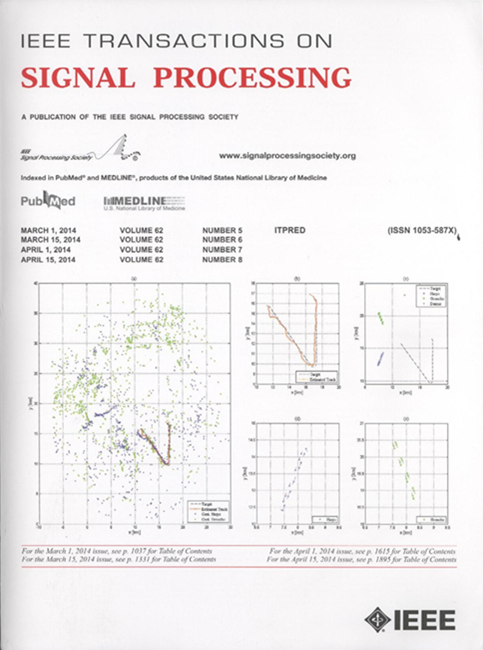Mitigating Spatial-Wideband and Beam-Split Effects via Distributed IRSs: Design and Analysis
IF 5.8
2区 工程技术
Q1 ENGINEERING, ELECTRICAL & ELECTRONIC
引用次数: 0
Abstract
This paper addresses the mitigation of spatial-wideband (SW) and the resulting beam-split (B-SP) effects in intelligent reflecting surface (IRS)-aided wideband systems. The SW effect occurs when the signal delay across the IRS aperture exceeds the system’s sampling duration, causing the user equipment’s (UE) channel angle to vary with frequency. This leads to the B-SP effect, wherein the IRS cannot coherently beamform to a given UE over the entire bandwidth, reducing array gain and throughput. We first show that partitioning a single IRS into multiple smaller IRSs and distributing them in the environment can naturally mitigate the SW effect (and hence the B-SP effect) by parallelizing the spatial delays and exploiting angle diversity benefits. Next, by determining the maximum number of elements at each smaller IRS to limit B-SP effects and analyzing the achievable sum-rate, we demonstrate that our approach ensures a minimum positive rate over the entire bandwidth of operation. However, distributed IRSs may introduce temporal delay spread (TDS) due to the differences in the path lengths through the IRSs and this may reduce the achievable flat channel gain. To minimize TDS and maintain the full array gain, we show that the optimal placement of the IRSs is on an ellipse with the base station (BS) and UE as the focal points. We also analyze the impact of the optimal IRS placement on TDS and throughput for a UE that is located within a hotspot served by the IRSs. Finally, we illustrate that distributed IRSs enhance angle diversity, which exponentially reduces the outage probability due to B-SP effects as the number of IRSs increases. Numerical results validate the efficacy and simplicity of our method compared to the existing solutions.通过分布式IRSs减轻空间宽带和波束分裂效应:设计与分析
本文讨论了智能反射面(IRS)辅助宽带系统中空间宽带(SW)的缓解和由此产生的波束劈裂(B-SP)效应。当IRS孔径的信号延迟超过系统的采样持续时间时,就会发生SW效应,导致用户设备(UE)信道角度随频率变化。这导致了B-SP效应,其中IRS无法在整个带宽上相干地波束形成给定的UE,从而降低了阵列增益和吞吐量。我们首先表明,将单个IRS划分为多个较小的IRS并将其分布在环境中,可以通过并行空间延迟和利用角度分集优势自然地减轻SW效应(以及B-SP效应)。接下来,通过确定每个较小IRS的最大元素数来限制B-SP效应,并分析可实现的和速率,我们证明了我们的方法确保了整个操作带宽的最小正速率。然而,由于通过IRSs的路径长度的差异,分布式IRSs可能会引入时间延迟扩展(TDS),这可能会降低可实现的平坦信道增益。为了最小化TDS并保持全阵列增益,我们表明,irs的最佳位置是在以基站(BS)和UE为焦点的椭圆上。我们还分析了最佳IRS位置对位于IRS服务的热点内的终端的TDS和吞吐量的影响。最后,我们说明了分布式红外干扰源增强了角度分集,随着红外干扰源数量的增加,由于B-SP效应导致的中断概率呈指数级降低。数值结果验证了该方法的有效性和简便性。
本文章由计算机程序翻译,如有差异,请以英文原文为准。
求助全文
约1分钟内获得全文
求助全文
来源期刊

IEEE Transactions on Signal Processing
工程技术-工程:电子与电气
CiteScore
11.20
自引率
9.30%
发文量
310
审稿时长
3.0 months
期刊介绍:
The IEEE Transactions on Signal Processing covers novel theory, algorithms, performance analyses and applications of techniques for the processing, understanding, learning, retrieval, mining, and extraction of information from signals. The term “signal” includes, among others, audio, video, speech, image, communication, geophysical, sonar, radar, medical and musical signals. Examples of topics of interest include, but are not limited to, information processing and the theory and application of filtering, coding, transmitting, estimating, detecting, analyzing, recognizing, synthesizing, recording, and reproducing signals.
 求助内容:
求助内容: 应助结果提醒方式:
应助结果提醒方式:


